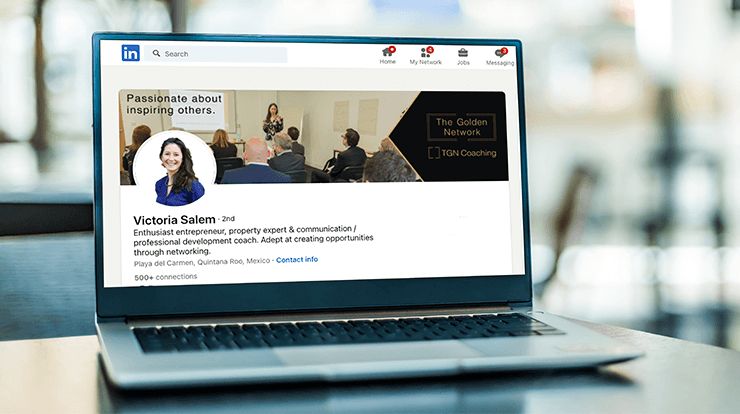
Think back to the time when you walked through the door or logged into your first Toastmasters meeting. Did you know what to expect?
If someone asks you about the organization today, what do you tell them? What should a prospective member consider before joining Toastmasters? Whether you’re speaking to a family member, friend, colleague, or stranger on the street, here are some tips and talking points to help them get started in Toastmasters.
What Is Toastmasters International?
In 1924, Dr. Ralph C. Smedley founded Toastmasters at a YMCA in Santa Ana, California, to help others develop public speaking skills. Today, the global nonprofit has 300,000 members in more than 15,800 clubs in 149 countries. Its mission is to “empower individuals to become more effective leaders and communicators.”
To help fulfill this mission, Zachary Williams, a member of True Blue Talkers in Murfreesboro, Tennessee, explains the importance of listening to the guest and finding out what they hope to get out of their experience. “Everyone comes to Toastmasters with different wants and needs,” says Williams. “Some come for professional reasons and others for personal. Listening plays a major role in deciding upon what benefits of the club are best suited for our nonmembers. From there, the decision to get them to join is pretty simple!”
How to Find a Club
The first step is to find a club by checking the Toastmasters website. Contact information for each club is available there. While all Toastmasters meetings have a similar structure, each club has its own culture.
There are clubs around the world that can meet anyone’s needs, with meeting times in the morning or afternoon, or at night. Some clubs meet once a week, while others meet once or twice a month. There are also different types of clubs, including community clubs, which are open to everyone, and corporate clubs, open to employees where the club is located. After being in Toastmasters for a while, a member may decide to join an advanced club to help them further develop public speaking skills. Members can also belong to more than one club at a time.
Prospective members are encouraged to visit as many club meetings as they wish until they find the right fit. Guests can participate in meetings as much or as little as they want. Many clubs hold online meetings or hybrid meetings (a mixture of online and in person). To show what a Toastmasters meeting looks like, share the video below.
Meetings Make the Experience
Each Toastmasters meeting has a number of roles that play an important part in making the club experience enjoyable. These include the Toastmaster of the Day (who leads the meeting), Table Topicsmaster (who leads the impromptu speaking session) and a prepared speaker. A timer keeps all speakers within time limits and a grammarian helps participants with grammar and vocabulary. Each prepared speaker has an evaluator, and a general evaluator evaluates the entire meeting. Speakers are encouraged to meet with their evaluators before the meeting to establish what the speaker wants to accomplish. Members rotate roles at each meeting so that everyone can experience each role.
Leadership skills are also a key part of Toastmasters. A committee of club officers are elected each year. Members also have the opportunity to become leaders on the Area, Division, District, and international levels.
Built-In Support
When encouraging someone to join Toastmasters, members often mention how supportive their fellow club members are to new or nervous speakers. Evaluations are positive and uplifting. The emphasis is on building confidence, not on tearing someone down.
Rosemary Hallberg, a member of Top Triangle Toastmasters in Morrisville, North Carolina, believes this is a key selling point for Toastmasters. “I had always heard about Toastmasters,” she said. “But I was so nervous about public speaking that I did not join for years. When I finally joined, I was pleased and relieved to receive support. It really is a warm, supportive environment.”
Lenka Landova is a member of S.E.A. Sharks of ExxonMobil Association club in Prague, Czech Republic, and she agreed that Toastmasters is a friendly, safe environment not only for the development of communication and leadership skills but also for networking. “We have so much to offer ... depending on what people are currently looking for. From time management to constructive feedback, to mentoring, flexibility, and confidence,” she said. “The list can be very long.”
Landova helps new members understand that Toastmasters is not only the club they are a member of, but in fact “a whole regional/national/international community of friendly people all working on themselves and cooperating together. If you want to, you can get so much outside your bubble, meet amazing people, travel ... it took me awhile to fully get it.” says Landova.
Members of PwC Prague Toastmasters club in Prague, Czech Republic, share what the organization means to them.
Choose Your Own Education Path
The Pathways learning experience is the Toastmasters education program, a flexible and interactive way to build real-world, transferable skills at your own pace. When joining Toastmasters, members can choose from 11 paths with 300 unique competencies designed to highlight a specific skill set. The paths include Dynamic Leadership, Effective Coaching, Engaging Humor, Innovative Planning, Leadership Development, Motivational Strategies, Persuasive Influence, Presentation Mastery, Strategic Relationships, Team Collaboration, and Visionary Communication.
Each path has five levels, increasing in complexity as the member progresses through each level. Level 1 includes the Ice Breaker, a member’s first speech before a club. (Guests can sample the Ice Breaker Project to get a feel for how projects are structured.)
Levels 3 through 5 include a number of electives designed to engage members in developing new skills. Some electives include Creating a Social Media Presence, Developing a Podcast, and Leading a Panel Discussion.
Members can choose which path to work on and can go at their own pace when completing the Pathways projects—there is no timetable other than the one set by the member. Toastmasters can also work on more than one path at a time.
The first path selected is free. Any subsequent path costs 20 USD. All Pathways materials are available online, and printed materials include an extra cost. Materials are available in Arabic, English, French, German, Japanese, Portuguese, Simplified Chinese, Spanish, and Traditional Chinese, with select paths available in Korean and Tamil. Materials are also available for the visually impaired.
If you know someone who is interested, but isn’t ready to commit to becoming a member, they can try Toastmasters Fast Track to experience the benefits of the program.
Dues
Members pay dues of 45 USD each April 1 and October 1 (collected in March and September respectively). Additionally, each club will have its own dues. Club dues are usually small but may be larger if the club needs to pay for a meeting space.
A Good Investment
Massimo Peroncelli, a member of Lion Toastmasters Club in Sriracha, Thailand, says that new members can often feel overwhelmed in the beginning of their Toastmasters experience. “It helps to reassure them that they can learn it all by practicing.”
And when someone asks if it’s worth it?
“It is the best investment you can make with the least amount of money,” says Peroncelli.
Peggy Beach, DTM is a freelance writer and communications instructor in Raleigh, North Carolina. She is a Past District 37 Governor. A member of the Hi Rise Toastmasters in Raleigh and the Top Triangle Toastmasters in Morrisville, she is available at writereditorpeggybeach@gmail.com.



 Previous
Previous

 Getting Started
Getting Started
 Previous Article
Previous Article

